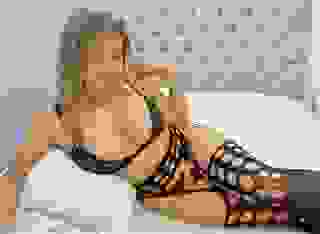- How To
- Improve Your Writing: Summary
Note: You can change font size, font face, and turn on dark mode by clicking the "A" icon tab in the Story Info Box.
You can temporarily switch back to a Classic Literotica® experience during our ongoing public Beta testing. Please consider leaving feedback on issues you experience or suggest improvements.
Click hereI have written fiction for twenty-five years: published three novels and a collection of short and novella-length stories, as well as have a desk-full of novels and short stories in progress. Below I have summarized the questions aspiring authors ask me and my answers to them. Hope this helps you write better stories.
Plot: All well written stories follow the simple, 3-act structure: Greek Tragedies to Shakespeare to Spielberg.
Act 1: Beginning
Introduce the setting and time (solidly ground your reader so he knows where and when)
Introduce at least some of the characters (so your reader can begin emotional involvement with them.)
The precipitating incident (why start the story now?) Also use this to hint what the story is about.
Begin action NOW! If you haven't done something interesting (the hook) by the third page (of a novel-length story) you've probably lost your reader. Shorter stories, even sooner.
Act 2: Middle
Build the story
Two steps forward, one step back. Difficulty makes forward progress sweeter.
Your readers want to see small victories and failures on your character's path to the big victory.
Build from small to more significant and important happenings. Build tension via failure.
Act 3: End
Your story's climax
Summary & wrap-up (if Romance, then end with Happily Ever After)
Memory Dump
Don't dump a lot of description in all at once, especially right at the beginning.
Sprinkle it in as your story proceeds.
White space (makes your story easier on the eye and brain):
Vary sentence length and paragraph length. Keep sentence length to 24 words or less.
Use dialogue to give the reader's brain a change of pace
Use thoughts (internal dialogue) to give the reader's mind a rest from action
If you can't read it out loud a week later without stumbling, fix your stumbling block.
Let the characters 'live and experience' what you want your reader to experience. Through your characters, let your readers live it, too. Don't just tell them! (The old adage: show, don't tell!)
Character Development
Characters should grow, change, and develop as a result of what they do in your story. Else, why have the story at all?
All major characters, even your villains, must be someone the reader can become emotionally involved with (either good or bad). Enjoyment of reading comes from emotional attachment and involvement. Without this, the story will be flat, and if the reader does finish reading it, he/she will end up frustrated and dissatisfied. You don't want frustrated readers.
Character Goals, Motivation, and Conflict (GMC). Each character must have all three.
Goals: What does the character want? (It's best if goals are both surface and deep-rooted)
Example: Main character, Joe, wants romance with Marcy (surface). Joe wants to reinforce his manhood image to himself and boost his ego. (deeper)
Motivation: Why does he want what he wants?
Example: Make him feel manly and 'worthy' of existence as a human being.
Conflict: Why can't he have it?
Example: Marcy thinks he's a nerd, beneath her, and she won't give him the time of day. Not only that, she's been living with his best friend forever, and isn't about to change.
Your story will now be about how Joe integrates these GMC's and succeeds, or accepts failure. Without goals, motivations, and conflict, your characters and story will be boring.
Caution: Petty arguments are not conflict, nor are minor disagreements that could be solved by simple discussion. Conflict must be substantial, something worth fighting/struggling to overcome.
Point of View (POV)
Point of view means through whose eyes the reader experiences your story.
If 'Jerry' is your point of view character, the reader should experience the story (or that part of the story) through his senses, and only his senses. He knows only what he feels, hears, smells, says, tastes, and/or thinks. He does not know what anyone else thinks unless they tell him, or he infers it from something they do or say or show via their expressions.
POV should remain constant throughout any scene. To do otherwise disorients the reader and is quite annoying. (In professional jargon it's called 'head hopping.'). Anything that disorients the reader is prone to sending him away to some other writer/story.
POV should be changed only at chapter breaks or scene breaks. Not in the middle of scenes or paragraphs. Usually, it's easier at first if the whole story is written it one POV, but not always.
When changing POV, make it obvious that the POV has changed and to whose POV it changed. Example: If Jerry was the POV character, and Sue is to be the new POV, then in the first sentence maybe say: Sue thought, Sue heard, Sue wished, Sue tasted, or whatever is appropriate to your story. Jerry would not have thought, wished, tasted or heard exactly what Sue did, so now we know we're in Sue's head instead of Jerry's.
When you use one character as the Point of View, that is often referred to 'Close' or 'Deep' POV because the reader is close to that character. This POV has the advantage of putting the reader inside the character's head where it's easier to achieve the reader's emotional involvement with the character. (Which, as an author, is your primary goal, right?)
Old fashioned stories will sometimes be written in another POV called 'Omniscient.' At best, this POV distances the reader from the characters. At worst, it ends up being an excuse for plain old, self-destructive 'head hopping.' With Omniscient POV the viewer stands far back and watches, sort of like a god, seeing all, knowing all, but really not caring all that much about the characters or what is happening to them. Not good for involving your reader with your story.
Head hopping with POV problems is one of the greatest faults I've seen with stories from new authors. Do your best for your great story ideas & plots. Control your POV's.
Verb Tense
Verb tense must remain constant throughout the story (except when contained within quoted dialogue, thoughts, letters, documents, etc.). If it's happening now, it stays now. If it happened sometime in the past, then it stays past. Don't mix them.
Note: Present tense tends to be fatiguing to read because it's very urgent. But if you need something urgent and it's short, (as within dialogue) then use it. But don't overdo it.
Person
First person: The 'I/we' way of telling something. 'We went to the café, where I hit on the cashier again.'
Second person: The 'You' way of telling something. 'You go to a café, and there you hit on the cashier again.' Seldom works, so don't use it if you can avoid it. Mostly you see second person in cooking recipes: '(You) break three eggs, then (you) mix them with the milk and flour. (You) roll out 1/4" thick and (you) cut into 1 inch squares.' Incidentally, much of this article is 2nd person because it is a case of giving directions (like a recipe).
Third Person: The 'he/him/she/her/they/it/them' way of telling something. 'They went to the café where he hit on the cashier for the hundredth time .'
Keep the 'person' of your story constant. Don't wander off into mixing. Of course, it's okay, done properly, to mix within dialog and thoughts, just as it's no problem to mix tenses within dialogue and thoughts. But beware to do it right!
So there you have it. Hope all this helps you write better and earn more favorable reader response. Isn't Literotica fun?
Write On!
Chuck Lyons.
- COMMENTS
Some great advice. Straightforward, clear and helpful... thank you .
. . . the people who need to read this probably won't.
Head hopping, homophones, and general lack of even the slightest understanding of grammar are rampant on this site, as are sudden and unreasonable shifts in verb tense.
Thanks for posting this. It's excellent, as far as it goes, and it was obviously intended to be short.
information of how to actually type it is not!
eg
"No." OR 'No'
"No." OR
"No."
How to express thoughts eg
'That's nice!' OR in italics OR in italics and the '.....' apostophies etc
What about examples of the use of to and too ?
How to set out dialogue....
indent paragraphs or not?
"Dialogue." he smiled, "dialogue." and story continues on this line or not?
She smiled, "Rubbish." I said. OR
She smiled.
"Rubbish." I said. Or
She smiled,
"Rubbish." I said.
I mean the actual mechanics of the story set out.............. !I've found this sort of info hard to get.
FRUSTRATED
This short essay should be required reading for all new authors.
I'd like to add another problem I often encounter here.
When starting a story, let the reader know the sex of the protagonist early. I'm a guy, I tend to assume a character is a guy unless directed otherwise.
There are many ways this can be done, you don't have to spell it out. Someone addressing them; a description, a function limited to one sex, there are lots of ways to do it.
Sometimes I've had to read 10 or 15 paragraphs into the story before I can get critical information like this.
Next, a suggestion. As part of my job, I write professional articles. There is no excuse for discreet vs. discrete, they're vs.they are, and all the other myriad homophones and other problems in our English language. Just Google it!
I typed in discreet discrete and immediately got the difference. It's not hard!
Thanks for your article,
ttom
I always knew that stories that lack conflict are boring, but I couldn't have named it. For example, when a story jumps to the mechanics of a sexual encounter with no build up I head for a different story. When location, age difference, family relationship, or the like are barriers to overcome the story keeps my attention.
Thanks for your clear, concise guidelines. I still think it's easier said than done.
I would add a few though.
1. Expand your vocabulary. The more words you know, the better job you're likely to do expressing yourself. Just don't fall into the trap of using this as an excuse to show off how many long words you can cram into a sentence. Use the word that fits best, not the one that you think sounds most impressive.
2. Read. Especially in the category in which you want to write. The more you have read in that category and seen what does and doesn't work, the more your own work is likely to benefit.
3. Try to find a friend who is willing to provide editing services for you. Even the best writers can make typos, and no matter how minor your mistakes, they WILL distract a reader from your story. You want someone who can edit for grammar and spelling, and you want someone who can edit for storytelling: character, plot, and pacing.
Either don't use the word 'smirk' at all, or at least use it correctly.
Keep in mind that 2nd person (the person being addressed) will be the reader. This approach fails spectacularly in sex scenes when the 'you' doing the reading is not the same gender as the 'you' that the writer is addressing in his/her fantasy.








